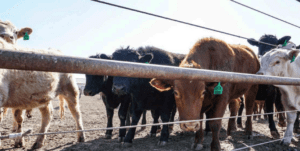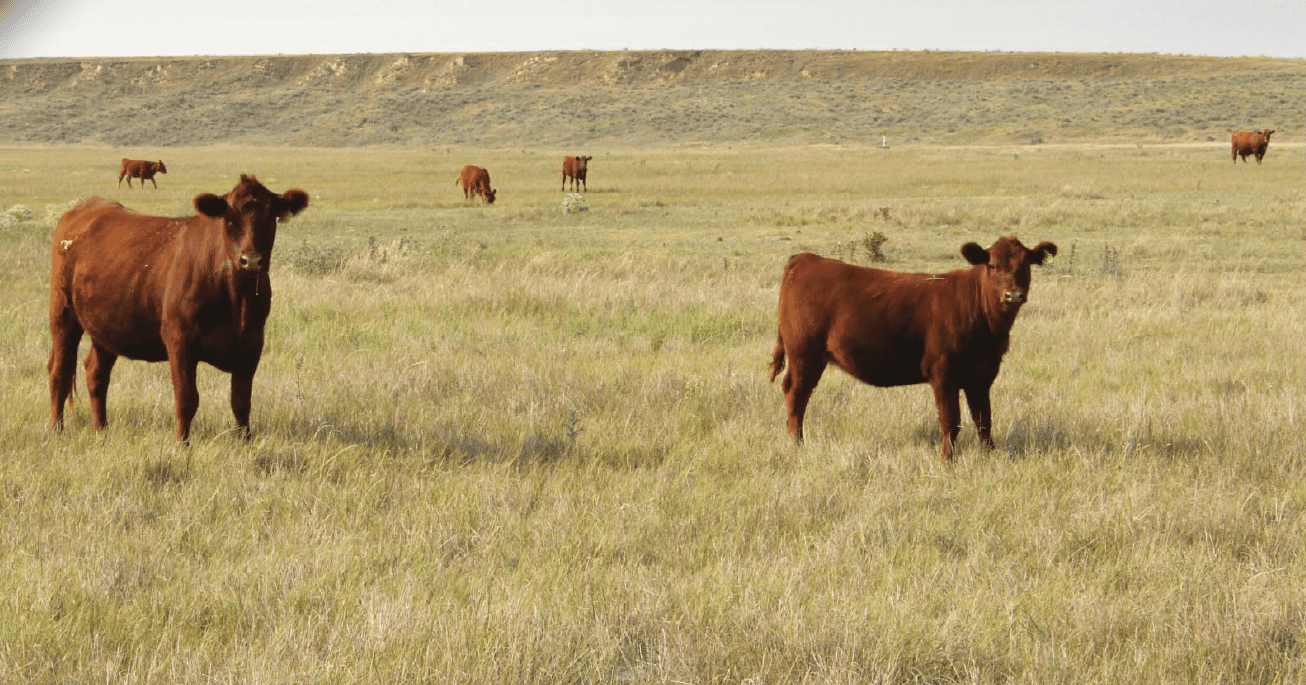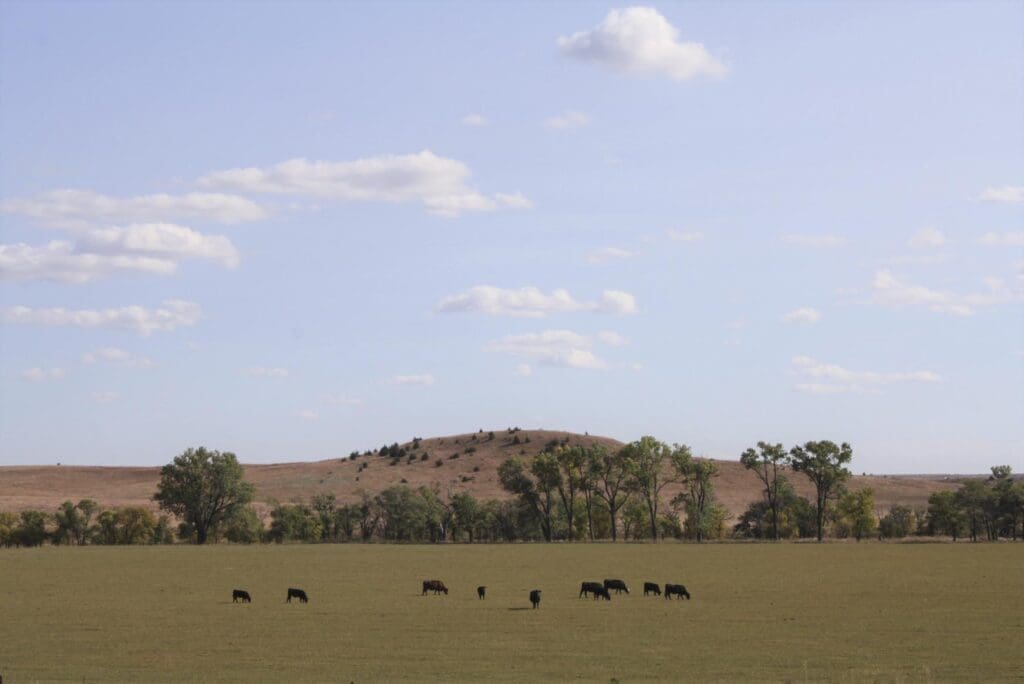

Pinkeye is one of the most common diseases in cattle. Yet, it seems like it continues to happen and influence cattle around the globe every summer.
Pinkeye is not a fatal disease in cattle, but it is extremely painful, and debilitating, depending on the severity of the case.
Driving through a pasture to find your best calf blind decreases our profits and can be demoralizing.
Dr. Dan Upson at Kansas State University used to teach, “There are two reasons why animals get sick: 1) an overwhelming dose of a pathogen and 2) a suppressed immune system.”

Pinkeye is no different than any other disease on a mucosal surface like pneumonia, mastitis, or scours.
In this column, we will discuss causes, treatment, and prevention of pinkeye in beef cattle.
The pathogen most commonly associated with pinkeye in beef cattle is Moraxella bovis.
This bacterium is cultured routinely in pinkeye cases along with some lesser known bacteria. The clinical signs of pinkeye start subtly.
Calves will begin to have watery eyes and then start wincing or blinking around 4 to 5 days before actual pinkeye lesions appear.
Pinkeye lesions are light colored areas in the very center of the eye surface.
If left to progress, these lesions can cover the entire eye surface, cause severe swelling of the eye, and lead to ulceration.
Calves with severe pinkeye have severe sight impairment or blindness in the affected eye.
There are many theories to why M. bovis can set up and colonize on the eye surface which causes pinkeye lesions.
Remember, overwhelming pathogen and/or suppressed immune system. The first line of immunity defense is the physical barrier of mucosal surface.
Constant irritation of the cornea can create an abrasion that allows the bacteria a place to take hold on the eye surface.
Constantly hitting the cornea of the eye with an irritant is similar to getting a blister on your thumb from constant rubbing or irritation.
Irritants like seed heads, tall grass, severe pollen, and flies all can lead to irritation of the eyes. Gases, such as ammonia, in confinement facilities can cause irritation to the eye surface.
Once there is an abrasion, the bacteria can grab hold and colonize on the eye surface.
The second line of defense in the calf’s body is the internal immune response.
Colostrum, calf nutrition (vitamins and minerals), and environmental conditions are all important to maintain to maximize the immune response and decrease stress in the calf or cow.
A solid herd health program including vaccinations is vital.
The jury is still out on the efficacy of M. bovis vaccines to prevent pinkeye, but we do know that they are safe.
Viral bovine pathogens can cause immunosuppression in the calf.
Vaccinating for IBR, BVD, PI3, and BRSV are all important to overall health of the cattle, including pinkeye.
The key to treating pinkeye is to catch it early and treat early.
There are many antibiotics on the market labeled for treating cattle for pinkeye.
Work with your veterinarian on the right antibiotic for your herd.
Secondly, protecting the eye from UV light and from further irritation is important.
The use of eye patches (commercial or Wrangler jean patches) is one option.
The other option has been to use absorbable suture to sew the eye lids shut for 10 to 14 days.
But rest assured, the more severe the lesion is at the time of pinkeye treatment, the lower the chance for a positive case outcome.
Pinkeye prevention in your herd health program is the key.
Pinkeye control starts at birth by making sure the calf gets colostrum.
Next, work with your veterinarian to develop a vaccination program at branding prior to summer turnout for calves, cows, and bulls.
After turnout, many producers prevent pinkeye by mowing improved pastures to keep seed heads and grass height down which lessens eye irritation.
Fly control is also important for preventing pinkeye in cattle.
The use of fly tags at the proper times is great in your fly control strategy on pastures.
Lastly, proper vitamin and mineral nutrition for the cows to pass to the calves or for the calves to consume themselves is vital to a great pinkeye control program on your ranch.
Pinkeye is a non-lethal but terrible disease in beef cattle.
Most times in pinkeye outbreaks, we change a lot of management practices and use treatments.
The problem goes away but we really do not know what we did to stop it.
This is not different from other disease outbreaks in cattle.
Once the disease hits, we care for the animals and they have to have the ability to heal themselves.
The key is for every producer to be vigilant about pinkeye prevention and control as if it is going to happen every summer.
 Dr. Dan Thomson
Dr. Dan ThomsonDr. Dan U. Thomson is a third-generation bovine veterinarian from Clearfield, IA. Thomson is an owner/ partner in PAC veterinary and research services which oversees the veterinary care, health and well-being for 20% of the U.S. cattle of feed. He is recognized internationally as a leader in animal wel fare, beef cattle production, and cattle health management. Dr. Thomson’s research program has been granted over $35.3 million with $16.0 million of those funds coming with him as the primary investigator. Thomson is the founder and host of Doc Talk, a nationally aired beef cattle health veterinary show on television. He has hosted nearly 500 episodes of the show in its ninth season that reaches over 45 million homes world-wide. Dr. Dan is married to his wife Cindy. They have four daughters: Kelly, Katelyn, Tory, and Sarah. They enjoy basketball, fishing in southwest Iowa, and traveling together.
Get all Doc Talk episodes straight to your email inbox!